In this area we present our blog posts on a variety of Viking subjects from a variety of authors. Please scroll down or use the filter to look at specific subjects…
Explore our blog posts...
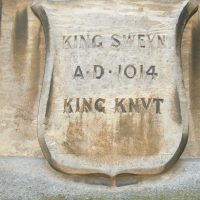
The Danelaw: a place or an idea?
The Danelaw: a place or an idea? This question was posed by Melvyn Bragg in a recent edition of In Our Time on Radio 4. The correct answer is ‘a bit of both’. But it’s a very good question and one worth a bit more exploration. As an area, the Danelaw is often thought to have been established in the treaty made at Wedmore between King Alfred and the Viking leader Guthrum in the 880s. While only recorded in later manuscripts, it is generally accepted as a true record of what was just one of several treaties between English rulers and Viking leaders at the time. The treaty is rather specific in being between ‘King Alfred and King Guthrum and the council of all the English nation and all the people which are in East Anglia’. It defines a boundary which goes ‘up the Thames, and then up the Lea, and along the Lea to its source, then straight to Bedford, then up the Ouse to Watling Street’. In this way the treaty delineates the area within which the provisions of the treaty apply but does not define who is in charge there. The provisions themselves are quite basic and are to do with the relationship between Danes and English, in cases of manslaughter, the purchase of men, horses or oxen, and recruitment to either army. In all the treaty is a practical, and limited, agreement which makes no assumptions about who occupies or holds the defined territory, which is in any case quite vague about how far north it might extend. There is also no suggestion in the treaty of any difference between ‘Danish’ and ‘English’ law, in fact the treaty takes pains to assess the compensation for the manslaughter of an English or a Danish man at the same amount. The idea that there are two legal jurisdictions, in which that of the Danes, or of Danish-held territory, is distinct from its English equivalent, does not become clear in documents until the early eleventh century. In these, lagu ‘law’, an Old Norse word introduced into Old English by Archbishop Wulfstan, collocates with the ethnonym Dena to express the idea of the ‘law of the Danes’, but the term is not yet a compound as in ‘Danelaw’. For example, in Æthelred’s law code (VI) of 1008, Wulfstan distinguishes between on Ængla lage 7 on Dena lage be þam þe heora lagu sy. This might be translated as ‘in the jurisdiction of the English and in the jurisdiction of the Danes according to what their legal practice might be’ and there are several similar uses of the term around this time. What this shows is that there is an idea of a Scandinavian (or Anglo-Scandinavian, as argued by Lesley Abrams) legal province within the English kingdom. This province is presumably territorially defined, though this is not actually indicated in the legal codes themselves. An earlier code of Æthelred (III, from around 1002, known as the Wantage code), does not use the Danelaw term but does mention the Five Boroughs and makes extensive use of Scandinavian legal language in legislating for that region. The Anglo-Saxon Chronicle, in a poetic entry for 942, makes a distinction between the Danes of the Five Boroughs (Derby, Leicester, Lincoln, Nottingham and Stamford) and the Norsemen who ruled north of them and from whose subjugation the Danes were freed by King Edmund. All this suggests that the Scandinavian legal province recognised in the law codes of the time reached only as far as the Humber, but that the legal distinctions between Danes and English were still important (and recognised) in the eleventh century, some 50-100 years after English rulers had conquered the Scandinavian-ruled areas during the tenth century. So, ‘Danelaw’ is not a term for the area defined in the treaty of Alfred and Guthrum. Also, as a legal concept it appears only to apply to an area south of the Humber, more specifically perhaps just the region of the Five Boroughs. However neither of these is how the term is most commonly used today. Despite its origin in the law codes of the early eleventh century, today the term is most frequently used in a more general way, without necessarily any reference to law, jurisdiction or even a well-defined area. Most commonly it is used to refer to that part of England which was, for want of a better word, ‘influenced’ by the activities of Scandinavians, whether they were the so-called ‘Great Heathen Army’ of the ninth century or peaceful settlers in the tenth. It is only after King Cnut became king of all England in the eleventh century that the distinction between ‘Danish’ and ‘English’ England becomes hard to sustain. The reign of Cnut and, briefly, his son Harthacnut brought new Scandinavian incomers to England, who often reached parts of England not otherwise thought of as falling within the ‘Danelaw’ and the overall picture is quite different. To use the term ‘Danelaw’ in this general sense is actually quite misleading. It implies that only Danes were involved in the Scandinavian impact on England, and that, whether idea or area, it is mostly about law and jurisdiction. But many scholars use the term in contexts where they are looking at the Scandinavians’ influence on settlement, culture both material and immaterial, and language, as well as their impact on church and society. Evidence for this influence and impact can be found in large parts of eastern and northern England, including regions far from the area described in the Treaty of Wedmore, or the Five Boroughs. Areas in the north-west, such as Cumbria, have plentiful evidence of Scandinavian influence in burials, metalwork, place-names, dialect, sculpture and runic inscriptions, yet there is almost no documentary evidence for how this Scandinavian influence came about. Is Cumbria part of the Danelaw? It was certainly part of the great Viking diaspora that affected much of England from the ninth to the eleventh (or even twelfth) century, yet the term ‘Danelaw’ does not seem entirely appropriate to describe that region in the tenth and eleventh centuries. Perhaps it is best to use the term ‘Scandinavian England’ (as in the title of an important collection of essays by F. T. Wainwright). Even better would be ‘Anglo-Scandinavian England’, since even the areas most heavily influenced by the Scandinavian incomers never completely lost their Anglo-Saxon inhabitants, material culture, customs or language. But although the term ‘Danelaw’ is inadequate, we should not completely forget it either. At the very least it reminds us that those supposedly lawless Vikings actually gave the English language its word for ‘law’, as still used today. References: Lesley Abrams, ‘Edward the Elder’s Danelaw’, in Edward the Elder 899-924, ed. N. J. Higham and D. H. Hill. London: Routledge, 2001, pp. 128-43. Lesley Abrams, ‘King Edgar and the men of the Danelaw’, in Edgar, King of the English 959-975, ed. Donald Scragg. Woodbridge: Boydell, 2008, pp. 171-91. Katherine Holman, ‘Defining the Danelaw’, in Vikings and the Danelaw, ed. James Graham-Campbell et al. Oxford: Oxbow, 2001, pp. 1-11. Sara M. Pons-Sanz, Norse-Derived Vocabulary in Late Old English Texts, Odense: University Press of Southern Denmark, 2007, pp. 70-72. Simon Trafford, ‘The Alfred-Guthrum treaty’, in Cultures in Contact. Scandinavian settlement in England in the ninth and tenth centuries, ed. Dawn M. Hadley and Julian D. Richards. Turnhout: Brepols, 2000, pp. 43-64. F. T. Wainwright, Scandinavian England, London: Phillimore, 1975. Dorothy Whitelock, English Historical Documents I. c. 500-1042. London: Routledge, 1996 [2nd ed.]. Early English Laws http://www.earlyenglishlaws.ac.uk/
Read More
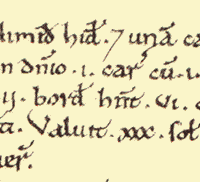
Watling Street, the Danelaw and the East Midlands, part 2
If you've not read the first part of this blog post, you can find it HERE. Why, in 1013, was the Danish king, Svein Forkbeard, able to rely on the support of what is described as the here – the raiding army – north of Watling Street, long after the ninth-century Viking armies had dispersed and settled, and northern and eastern England had apparently been integrated into the kingdom of England? It seems that the reality on the ground was rather more complex than Alfred’s successors would have us believe. For example, Edward the Elder issued a law code which clearly distinguishes between the rules on compensation ‘herein’ (in his own kingdom) and in the north and the east, the latter of which were instead determined by ‘the provisions of the treaties’ (in the plural). This clearly reflects the fragmented political landscape within these areas, at least before Edward’s campaign of 917. Edgar – while proclaiming his rule over a ‘united’ England – also allowed his Danish subjects considerable legal freedoms: ‘there should be among the Danes such good laws as they best decide on’. It is interesting to note that the first reference to distinctively Danish laws operating in England is found in a legal code issued by Archbishop Wulfstan of York in 1008, just a few years before Svein landed in Lincolnshire. In this code, the legal process for a man defending himself against charges of plotting against the king (at this time, Æthelred II) is said to be different ‘for those under Danish law’. Æthelred II also issued a separate legal code for the Five Boroughs of Nottingham, Leicester, Lincoln, Stamford, and Derby a little earlier, around 997. Although the areas covered by this document were considered to be part of England and under the rule of the English king, much of this law, known as the Wantage Code, aimed to extend English legal practice into the Five Boroughs. This suggests that legally, at least, important differences remained between ‘England’ and the ‘Danelaw’, which are underplayed in sources associated with the royal court of Wessex. The place-name map bears perhaps the clearest witness to the importance of Watling Street as a dividing line between English and Scandinavian zones, showing how very few settlements with Scandinavian place-names can be found south of its line. This seems to suggest that – whatever the number of Scandinavian settlers – at the time when most of these names were given, Watling Street must have operated as some kind of border, whether that was formally established through treaties or informally observed. This is perhaps not surprising, given that there is plenty of evidence for roads being used to delimit estate and parish boundaries in the Anglo-Saxon period. One of the difficulties in using place-name evidence to understand Viking settlement is that much of the evidence for Scandinavian place-names (and indeed for place-names in general) is first recorded in Domesday Book, William the Conqueror’s record of the land-ownership, taxable values, and population, that was assembled in 1086. This makes it difficult to know exactly when the names were given, and they therefore can’t specifically be linked to the period after the conquest of Mercia in the ninth century and before the re-conquest of the Danelaw. But what we can say is that the place-names certainly suggest that the language of the people living to the north of the line of Watling Street was heavily influenced by ‘the Danish tongue’ in the period before the late eleventh century when Domesday Book was compiled and, on the basis of Svein Forkbeard’s campaign in 1013, it seems likely that this division was already clear at the beginning of that century. It is nevertheless important to remember that, even in the areas lying to the north of Watling Street, between a half and two-thirds of place-names are English. The communities that were established in the ‘Danelaw’ can’t be easily defined as ‘Danish’ or ‘English’ or even ‘Anglo-Scandinavian’ – common sense suggests that there must have been considerable local variation, with there likely to be some pockets of heavily-Scandinavianised areas and others that were less affected. Domesday Book also reveals another clear difference in communities lying to the north of Watling Street in the late eleventh century: the proportion of people described as ‘freemen’ or ‘sokemen’ –essentially free peasants – as opposed to unfree cottars, bordars, and villeins. The Midlands counties of Warwickshire, Leicestershire and Northamptonshire formed a single administrative ‘circuit’ used by the Domesday commissioners, but while there are very few freemen recorded living on estates in Warwickshire, to the south of Watling Street, the numbers jump dramatically as soon as Watling Street is crossed, with freemen forming an important element in Leicestershire’s recorded population. In Northamptonshire, which is bisected by Watling Street, the same increase in the free population can be seen in the Domesday entries for estates lying to the north of Watling Street. An earlier generation of scholars, led by Sir Frank Stenton, saw the greater number of freemen in districts that had been affected by Scandinavian settlement as the descendants of huge Viking armies, who had hung up their axes and settled down to farm in the English countryside in the ninth century. Although this has long been rejected as too simplistic by historians, the distribution of these free peasants certainly suggests important social and legal conditions operated north of Watling Street, which is also hinted at in the earlier references to specifically Danish laws in northern and eastern England. As such, this evidence illustrates how Watling Street continued to mark a dividing line at the end of the eleventh century. Politically, legally, socially and linguistically, the East Midlands occupied a frontier zone, the importance of which continued to resonate through the Norman period. Useful sources: John Baker and Stuart Brookes (2013) Beyond the Burghal Hidage: Anglo-Saxon Civil Defence in the Viking Age. Leiden: Brill. Gillian Fellows-Jensen (1978) Scandinavian Settlement Names in the East Midlands. Copenhagen: Akademisk Forlag. David Hill (1981) Atlas of Anglo-Saxon England. Oxford: Blackwell. Katherine Holman (2001) ‘Defining the Danelaw’ in James Graham-Campbell et al. (eds) Vikings and the Danelaw. Oxford: Oxbow, pp. 1-11. Anna Powell-Smith and J. J. N. Palmer: Open Domesday. Available online: http://opendomesday.org Pauline Stafford (1985) The East Midlands in the Early Middle Ages. Leicester: Leicester University Press. Michael Swanton (transl. and ed.) (1996) The Anglo-Saxon Chronicle. London: J. M. Dent. University of London – Institute of Historical Research / Kings College London (2018) Early English Laws. Available online: http://www.earlyenglishlaws.ac.uk/ Dorothy Whitelock (ed.) (1955) English Historical Documents c. 500-1042. London: Eyre and Spottiswoode.
Read More
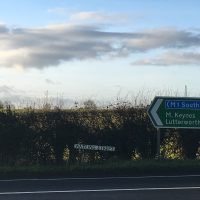
Watling Street, the Danelaw and the East Midlands, Part 1
When Svein Forkbeard, king of Denmark, launched his invasion of England in 1013, he landed in Lincolnshire and, according to the Anglo-Saxon Chronicle, received the submission of Earl Uhtred and the Northumbrians at Gainsborough, followed by ‘all the people in Lindsey, and afterwards the people of the Five Boroughs [Nottingham, Derby, Leicester, Lincoln, and Stamford], and quickly after, all the raiding-army to the north of Watling Street’. This brief reference neatly highlights the geopolitical diversity of the East Midlands in the Viking period, listing the various local factions who allied themselves with Svein Forkbeard against the English king, Æthelred II. Importantly, it also suggests that Watling Street marked a clearly recognised border running through the former kingdom of Mercia, a point that is underlined by the Chronicler’s next statement that Svein ‘after he came over Watling Street […] wrought the greatest evil that any raiding-army could do’. The clear implication is that those living to the south of this old Roman road were seen as Svein’s enemies and treated accordingly. But, with the present political debates about hard and soft land borders in mind, how did Watling Street come to be seen as a political frontier running through the Anglo-Saxon kingdom of Mercia? Watling Street – or Wætlingastræt – is the name that the Anglo-Saxons gave to the road that the Romans built to connect Dover with Wroxeter. It cut a roughly diagonal line, perhaps as much as six metres wide, running from the south-east, via London and St Albans, to the north-west of the country, crossing central England. Built in the mid-first century AD, it clearly continued to be an important route through the landscape long after the Romans had left, not least to the ‘Great Army’ of Vikings that arrived in England in 865 and defeated the Anglo-Saxon kingdom of Mercia in 874. Watling Street – as well as other Roman roads – allowed these Viking raiders to move quickly across long distances, which must have been an important factor enabling their victories across far-flung parts of Anglo-Saxon England, and bringing about the rapid collapse of the kingdoms of East Anglia, Northumbria and Mercia. The road still continues to divide the East Midlands from the West Midlands, preserved along much of the A5, which runs through Northamptonshire, and then forms the county boundary between Warwickshire and Leicestershire (with an important deviation that allowed Tamworth, lying to the north of Watling Street, to be incorporated into the Anglo-Saxon zone). As well as being mentioned in the Anglo-Saxon Chronicle entry for 1013, Watling Street is also mentioned in the treaty terms agreed by King Alfred the Great and his recently defeated Viking rival, Guthrum, sometime before 886, at a time when the last surviving Anglo-Saxon kingdom of Wessex was struggling for its survival. This agreement acknowledged clear spheres of control between the English and Danish leaders, and secured Alfred’s own kingdom of Wessex from the threat of Danish armies by recognising Guthrum’s control of East Anglia. The dividing line between Alfred’s and Guthrum’s kingdoms was outlined in some detail: ‘First concerning our boundaries: up the Thames, and then up the Lea, and along the Lea to its source, then in a straight line to Bedford, then up the Ouse to Watling Street.’ However, there is no suggestion in this treaty that the border continued to run north and eastwards along Watling Street through the Midlands, although some historians assume that this must have been the case. Instead, it looks like Alfred and Guthrum didn’t discuss the political situation in Mercia or attempt to define any boundaries there. This isn’t surprising as, of course, Guthrum wasn’t the only Viking leader harrying the English countryside in the ninth century, and other Viking leaders weren’t bound by the treaty terms agreed with Alfred. In 893, the Anglo-Saxon Chronicle refers to various oaths and pledges given to Alfred by Northumbrians and East Anglians, as well as the activities of ‘other raiding-armies’. By the time the treaty with Guthrum was agreed, it is also evident that some of the Viking armies had become a permanent fixture in northern and eastern England, with references to them dividing up the land and settling down. Mercia seems to have been divided into two halves, east and west, with the western part being left under the control of Ceolwulf, while the eastern part was settled. As a key communication route, Watling Street, would no doubt have functioned as a convenient dividing line to all parties in working out details of any agreement in Mercia. However, it seems that any agreement was fairly short-lived, and certainly the Anglo-Saxon Chronicle records how, after his death, Alfred’s son and daughter – Edward the Elder and Æthelflæd – campaigned north of Watling Street, trying to win back control of the area from the Viking armies. A series of fortified strongholds were constructed at key points across southern England, with those at Tamworth and Towcester representing English defensive points on Watling Street. By 921, ‘all the people that was settled in the land of Mercia, both Danish and English’ are said to have ‘turned to’ Edward, although this clearly glossed over the political realities of the continued struggle for control of the East Midlands. The arrival of Norsemen from Ireland around this time complicated the political landscape further, and one of their leaders, Olaf Guthfrithson, attempted to extend his control from York into the East Midlands. Following a devastating attack on Tamworth, Olaf met with King Edmund, Edward’s son, at Leicester, and Simeon of Durham records that their agreement in 941 specified that ‘Watling Street was the boundary of each kingdom’. But when Olaf died in the following year, Edmund captured the Five Boroughs and ‘conquered Mercia’. By the 960s, Alfred’s great-grandson, Edgar, was able to stipulate that his laws should ‘be common to all the nation, whether Englishmen, Danes or Britons’. The ‘Danelaw’ had apparently been reconquered by Alfred’s West-Saxon dynasty less than a hundred years after Alfred’s and Guthrum’s treaty and absorbed into a single political nation. So why, in 1013, was the Danish king, Svein Forkbeard, able to rely on the support of what is described as the here – the raiding army – north of Watling Street, long after the ninth-century Viking armies had dispersed and settled, and northern and eastern England had apparently been integrated into the kingdom of England? Find out in part 2 of this post.
Read More
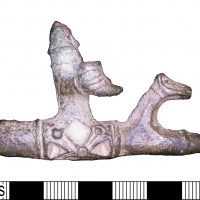
Viking Leicestershire: The Artefactual Evidence, Part 2 Metal-detected Objects
Metal detecting is adding greatly to our knowledge of Scandinavian Leicestershire. At the time of writing, there are 130 objects recorded on the Portable Antiquities Scheme database that are Scandinavian in style, including coins (see blog) and objects now in museums (see part 1). Although recorded on the Portable Antiquities Scheme database, all finds discussed below remain in private ownership. The two most important finds are ‘Viking’ disc brooches. A gilded Jelling-style brooch from Melton depicts two gripping beasts (LEIC-36241D) and will be loaned to Melton Carnegie Museum in the spring . The other is a disc brooch from Cossington (LEIC-E7A016) with pseudo-filigree gilding which is rare in such brooches. Dr Jane Kershaw has identified this brooch as probably Danish from the late ninth or early tenth century, i.e. from the period shortly after the Great Army arrived and the Danelaw was established. There are three Anglo-Scandinavian Borre-style knot brooches from Leicestershire. These are made in a Scandinavian style but were manufactured in England. Their distribution, firmly within the Danelaw, suggests a ‘Scandinavian’ market for jewellery that reflected the styles of Scandinavia, hinting at nostalgia for the Scandinavian homeland and a desire to express Scandinavian identity. one was found just east of Melton (LEIC-782CD2), another at Goadby Marwood (LEIC-604DE5) and the last at Frisby on the Wreake (LEIC-CD4F45). This last place-name is interesting because it reflects the dominance of Old Norse in the area but points to the main settler there being Frisian and indicates that the Great Army was probably not purely Scandinavian. Some of the other artefacts recorded incude an unusual Borre-style triangular mount from Great Bowden (LEIC-48A221), very rare stirrup mount-like strap ends from Long Whatton (DENO-083C15) and Donington Le Heath (LEIC-982247), an unusual Urnes style strap end from Kirby Muxloe (LEIC-3E15B5), and a vertebral ring chain decorated strap end from Osbaston (LEIC-AE3855). Harness fittings and stirrup mounts make up about half the total and these are termed ‘Anglo-Scandinavian’. Some have direct Scandinavian parallels, some are thought to be locally made, influenced by settlement and possibly Cnut‘s reign. One rare type of stirrup mount, only found in eastern England occurs as a very rare pair from Peckleton, Leicestershire LEIC-8D1AC0 and LEIC-8C54F0. You can read more about these on the PAS blog. Lastly, we have two very rare and enigmatic objects. The first, a possible prick spur (LEIC-EEF651), from Loughborough among a small but significant scatter hinting at Scandinavian activity. It depicts a helmeted, drinking-horn-wielding man and has two parallels: both are from Germany, and it has been suggested the figure may be a Slavic God. How did it get to Loughborough? Given its suggested date range 900-1200, it could have arrived with a Scandinavian settler or it could have arrived later and be pure co-incidence it ended up near Scandinavian objects. The other is even more of a mystery (LEIC-0A4CB4). It may be a cart fitting, but it has no known parallels. Its decoration screams Viking with its gilded interlace, moustached face mask and triskele-wearing bearded beasts heads. You can read further discussion about it in a guest post by Dr Rena Maguire on our blog. I am excited to report that the finder is probably going to donate this so that it can go on display. These objects highlight the importance of recording with the Portable Antiquities Scheme. Each object is adding to a network of evidence that illuminates this period. They demonstrate the range of material culture that was popular in the Viking Age and point to enduring connections between the Danelaw and Scandinavia. The last two especially show that by recording a mystery we may eventually find a parallel and enhance our knowledge later.
Read More
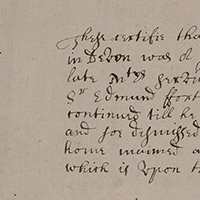
Viking Leicestershire: The Artefactual Evidence, Part 1 Museum Collections
As part of the Danelaw with a county town listed amongst the Five Boroughs, Leicestershire is rich in Scandinavian influence. The county is littered with ‘Scandinavian’ place names (e.g. Harby) and we are lucky that chance finds and excavations in the city of Leicester have revealed a few distinctly Viking or Anglo-Scandinavian artefacts. The following highlights some of these finds and where they can be seen or are held. Jewry Wall Museum, Leicester Victorian chance finds from Leicester include a pendant, with an openwork writhing beast in a circular frame from Highcross St. (LA18.1860). Two beautifully carved bone objects were also recovered from there: a beast's head with gaping mouth and a ‘tongue’ shaped strap end decorated with interlace and cat-like masks (LA67.1864). Kenyon’s excavations at Jewry Wall in 1948 found an unusual mount akin to an oval brooch (JW85.1) and two ‘Norse’-type ring-headed pins (LA33.1951) with a third already recovered from Cank St. in 1912 (LA116.1962). Just outside the city at Aylestone church, a wonderful stone object was found. It's a grave cover which appears to be Scandinavian in style with ‘triskeles’ and beasts decorating its surface (LA103.1969). Unfortunately, Jewry Wall Museum is closed for renovations as this blog is posted. Charnwood Museum, Loughborough In the county, we have the rare silver Thor's hammer pendant from Thurcaston on display at Charnwood Museum (PAS ref LEIC-185125). It was found by the same person who found our only Viking coin hoard, the Thurcaston hoard (LEIC-C6D945), which is currently held at The Fitzwilliam Museum, Cambridge but is unfortunately not on display. The hammer-shaped pendant was very rare when found in 1991, but we now have 22 examples on the Portable Antiquities Scheme database, including a rare gold Thor's hammer from East Lincolnshire (LIN-D3E540) which has similar decoration to the Thurcaston one. We also have a very rare sword pommel (Peterson type X LEIC-9158C3) from Ravenstone, metal detected and donated by the finder. It features ‘Ringerike’ ribbon-like decoration, dating it to the early 11th century. This is not yet on display but will be at Charnwood Museum for a temporary display in the Spring. Melton Carnegie Museum, Melton Mowbray In Melton Museum we have objects that are Anglo-Scandinavian, including a very rare stirrup mount from Kirby Bellars (LEIC-51E6F2). The only one of its type from Britain, its only parallel being continental and in the British Museum. We also have a harness strap distributor, one of many Anglo-Scandinavian horse accessories recorded with the Portable Antiquities Scheme. Further reading Stirrup mounts - https://finds.org.uk/counties/leicestershire/a-pair-of-stirrup-strap-mounts
Read More
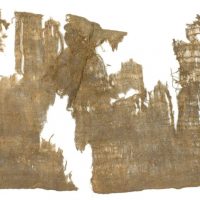
A Silk Headscarf from Lincoln
In the archaeology stores of The Collection in Lincoln is a very rare Viking silk headscarf found in the early 1970s. There was an excavation in advance of a development at Saltergate in Lincoln that uncovered a previously unknown Roman gateway as well as a Roman house, part of an Anglo-Saxon graveyard and in a pit, a silk headscarf about 20 centimetres wide and 60 centimetres long. The pit was found under a council office that was being demolished and the brick-lined cellar created the perfect conditions for this fragile item to survive. The pit has been dated to the tenth century, so roughly when Lincoln was an important Viking trading settlement. The name Saltergate means the street of the salt-makers or traders, gata being the Old Norse word for street. The earliest reference to Saltergate is in the thirteenth century, although the street later became Corporation Lane, and the name Saltergate was only reintroduced in 1831. Occasionally silk headscarves have survived on sites in Sweden and the Netherlands, but most have been found in the Viking towns of the British Isles (four from Dublin, three from York and this one from Lincoln). The secret of making silk was jealously guarded in the medieval period and the Byzantine Empire was the only place outside China where it was made. The weave from this scarf matches Byzantine silk suggesting it came from the eastern Mediterranean and amazingly it is so similar to one found in Coppergate in York that we think the two examples came from the same larger piece of material. Of course archaeologists from York think it was cut up there while I have a certain Lincolnshire bias, so think Lincoln imported the material and then smaller scarves were made from it and some re-exported north to Jorvik! The material is very expensive and exotic, so whoever wore it must have paid a good price for it. How the headscarf was worn is a matter of debate. Most reconstructions of such scarves have the material laid across the head with the two long seams at the back sewn together so it covers the rear of the head (and hair). There is a reconstruction on display in the Posterngate that has the silk headscarf merely as a strip of material worn sideways across the head with ties attached to the bottom front corners to keep it on the head. The original is in conservation and too fragile to put on display. How Viking women wore their hair is a matter of debate. The only written evidence is from much later Old Norse sagas that give a few clues which are hard to interpret. Representations of Viking women in stone carvings or metal figures are also tricky to understand. The figures in such carvings are often small so it is not easy to know what is a scarf, a cap or a braid of hair. We also don't know why women wore such scarves; perhaps women were expected to cover their hair for religious or cultural reasons in Viking towns. Perhaps the scarf was there as a fashion statement, to show off the wearer's wealth or maybe just a way of keeping her hair neat. The reconstruction can be seen as part of the Posterngate tours to see the Roman gateway. They only occur a few times a year, in 2019 it will probably be 1st March, 1st June and 1st of November (but it is worth checking The Collection's website prior to making a trip in case those dates or prices change) and costs approximately £2 per head to visit.
Read More
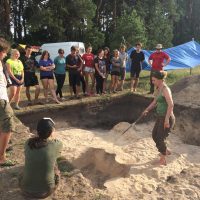
Vypovziv: A Viking Age outpost in Ukraine
In July 2018 a group of University of Nottingham students from the School of English went on an archaeological expedition to Vypovziv, Ukraine. The group was led by Dr Cat Jarman from the University of Bristol whose work on Viking camps at Repton has yielded spectacular results. As a result, Dr Jarman’s work with the Repton winter camp is particularly relevant to the project and allows sites such as Vypovziv to be compared more easily with its English counterparts. The village of Vypovziv is located two hours north of Chernihiv and is the site of a Viking Age Rus outpost. The outpost served as a control point along the Desna river route as well as a toll/re-supply station for travellers and merchants coming along the river to or from Kyiv during the later 9th through to the late 10th century. The Viking outpost is located on top of a tall ridge that stands out in the low marshy landscape and would have bisected the Desna River. The site included a fortified area with a palisade and a surrounding open settlement. The site included a fortified area with a palisade and a surrounding open settlement. Vypovziv, and sites like it, shares many similarities such as layout, location, and types of artefacts to winter camps in England such as Torksey and Repton, where Dr Cat Jarman is currently conducting archaeological fieldwork. Vypovziv, Repton, and Torksey all had some form of defence to protect them, were located in naturally strategic positions near rivers which provided easy access by boat, and at one stage in their lifespan became administrative and/or commercial centres. All three sites had a mixture of inhabitants, including women and children, and were specifically created by Scandinavian immigrants. The main difference between them is the initial motivation for their founding, Vypovziv was established as a point of control along a trade route while sites such as Repton and Torksey began life as a base for the Great Viking Army invading England. The Nottingham team were given a previously unexcavated section within the boundaries of what would have been the settlement area of the outpost just down the ridge from the fortified area. The artefacts found ranged in date from the late 9th century to the 12th century and included tools such as needles and awls, imported and local glass beads, imported jewellery, and various pieces of pottery, one making its way from the Byzantine Empire. The last day produced perhaps the most interesting finds, two ovens demarcating two separate dwellings. The team looks forward to returning next July to continue their exciting work. The expedition was made possible by funding secured by William Pidzamecky through the Cascade Grants Programme. The group joined the archaeological team from the University of Chernihiv, led by Dr Vyacheslav Skorohod, which has been excavating at the site for over a decade.
Read More

Anglo-Viking Coinage and other currency used by Scandinavians in Leicestershire
Working in a county that was part of the Danelaw and which had already revealed the small, but fabulously important Thurcaston hoard, found back in the 1990s (LEIC-C6D945), I was a little disappointed that in 13 years as a Finds Liaison Officer, I had only recorded one ‘Anglo-Viking’ coin. This was a ‘Cunnetti’ issue (895-902) of York, found in 2009 in Rearsby Parish (LEIC-B230B). Everything changed in late in 2015 when I was shown a St Edmund memorial penny. These were minted in East Anglia by its Scandinavian rulers c. 895-910 AD. The coins feature the often blundered inscription ‘SC EDMUND’, a dedication to the saint who was, ironically, martyred by ‘Vikings’. I told the finder how rare his coin was and that he had made my year (see LEIC-19C0DA ). However, it seems that these coins are like buses and within weeks I was shown another (LEIC-B7F405). By April 2016 we had the hat trick, with a third being found in the same district as the first, all in North Leicestershire ( LEIC-4FC58C). A further two examples of this coin had been found prior to the inception of the Portable Antiquities Scheme. The first and the only ‘Anglo-Viking’ coin recorded for Leicestershire on the Early Medieval Corpus (EMC - managed by the Fitzwilliam Museum who also care for the Thurcaston hoard) was found near Wymeswold in 1987 (EMC 1987: 118). The only one found in the county so far by excavation turned up during the major ‘Shires’ excavation in Leicester city centre in 1988 (A39.1988). This alone is a very important find. As an ‘Anglo- Viking’ coin lost in an urban environment, it suggests that Scandinavian traders were present or, at least, that a Scandinavian lost a coin they were hoping to use as currency there. The St Edmund coins are very interesting for a number of reasons: firstly, they are not 'legal' tender in England, so must have been circulating amongst Scandinavian settlers. Because of this their distribution may tell us something about the locations of such settlers and also which areas were Scandinavian enough to be producing these coins. We don’t yet know for certain where these coins were minted. The majority were lost (unsurprisingly) within East Anglia, so judging by their find spots, were minted in Bury St Edmunds (also named after the saint). There are also examples now turning up in the East Midlands and the south east. The numismatist Dr. Mark Blackburn thought that some were also minted in the East Midlands, as the coins vary slightly in design. Given their distribution Leicester, Derby or Nottingham are possibilities. Nationally the PAS has recorded 37 (as of Sept 2018) and EMC has 95 (end 2017). Most were single finds from within the Danelaw, with the most northerly outlier being one in a hoard in Cumbria, and a few were found just outside the Danelaw in Oxfordshire and Staffordshire. In addition to this ‘Anglo-Viking’ coinage, other forms of currency were circulating. The Scandinavians practised what we call a ‘mixed’ or ‘bullion’ economy where coins were valued for their weight in silver as well as their face value and ‘hacksilver’- cut up artefacts or chunks of bullion were also used as currency by weight. This is why the Thurcaston hoard is important as it contains Anglo-Saxon, ‘Viking’ York and Arabic coin issues. The latter two were not legal currency, so could have only circulated as ‘bullion’. The hoard dates to 923-5 so it’s also good evidence for a mixed economy still being used by the local population at a time when the Danelaw was supposedly back under Anglo-Saxon control. In Leicestershire we have a few examples of this economy, most notably two ‘cigar’ shaped silver ingots which were found near Breedon on the Hill (DENO-34FB88 DENO-CE6103) and which featured in the Danelaw Saga exhibition. Nationally the PAS has recorded 163 of these ingots (136 are silver) with the largest concentrations coming from Lincolnshire, Norfolk, Suffolk, Yorkshire and Cumbria. We have evidence for other foreign coinage probably used as bullion. We have a silver Denier of Charles the Bald, Carolingian King of the West Franks, c.840-877, from Grimston, Melton (LEIC-9F7227). Only 8 of these have been recorded by the PAS nationally and they are thought to have circulated in fairly large numbers in eastern England in 9th and 10th century as a result of the Scandinavian presence. Even rarer is a copper alloy coin of Umayyad Syria, probably minted in Damascus and dating to the 8th century. This was found in a garden in Loughborough (LEIC-94D4D2). It’s just possible that such a coin was lost by a passing Scandinavian. We also have a rare example of ‘pecking’ -a practice of testing the purity of silver by inserting a knife blade into a coins surface. A penny of Aethelred II from Syston (LEIC-01EB53) has been pecked all over both surfaces, suggesting it went through several ’Viking’ hands who wanted to check for themselves that the coin was indeed pure silver. This currency, in its many forms, adds an important layer of evidence in a county that was in the Danelaw, but which has not yet yielded too much solid evidence for Scandinavian settlers. They add much weight to the counties few artefacts and many place-names that reflect an Anglo-Scandinavian character, but whose reliability as evidence for settlers is hotly debated. These issues were only used in Leicestershire by people who accepted them, either for their bullion value or because they were Scandinavian issues. So unless the illegal use of non-English currency was rife in the East Midlands, this currency points to a Scandinavian population. For more information on Anglo-Viking coins see: www.finds.org.uk www.emc.fitzmuseum.cam.ac.uk Blackburn, M.A.S. Viking coinage and currency in the British Isles, Spink 2011.
Read More
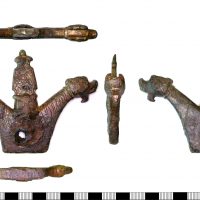
Blazing Saddles? Saddles in the Viking Age (Part 2)
This is part 2 of a blog post on Viking Age riding equipment. You can read Part 1 HERE. Viking saddles develop from the 4th century AD, with Eurasian influences very obvious, and there’s a bit of Roman influence there too, but when you think of the great war booty deposits of the Roman Iron Age in that region, that is very much to be expected. Typically, the saddles have high pommels, and occasionally high padded cantles to create a very secure and comfortable seat, although we are still uncertain about some aspects of their construction and use. Often there are gullets and pommel horns not unlike a modern Western saddle, enhancing the comfort aspect for the long distance rider. When we consider the pacing animals in Nordic equitation, and the glorious flying tölt they execute, then this makes a lot of sense. The pace of these ponies eats the miles up with maximum comfort. You would not want to spend an entire day cross-country hacking in a flat dressage saddle as you’d be very 'Thor' at the end it all ( sorry). It has to be noted that it is very difficult to knock someone out of one of these saddles. Saddles have been found in burials around Scandinavia in various states of preservation, sadly none of them ultimately satisfying to the archaeological mind, but I have to say I’ve been quite taken with the reconstructions by Carlstein (2014) to fill in the gaps of Vendel (and as a result Viking) saddlery. Examples have been found at Vallstenarum, in Gotland, and also in the Valsgärde 7 burial (see Fig. 4), both Vendelic, but there is such a huge continuity of style, the chronological devil appears to be in the details. These saddles were decorated with metal mounts on both pommel and cantle (Lindgren 2017; Carlstein 2014; Arwidsson 1977). The most complete example is the Oseberg saddle, which dates between AD 800 -900 (Bonde and Christansen 1993). It is made of beechwood, and in the absence of the padding it would have had around it, stud marks are visible, which may well suggest it too would have had decoration of some kind. Likewise with the frame of a saddle found at Fishamble Street in Dublin (Kavanagh 1988). Bling was commonplace on Viking equestrian equipment, making the ordinary workaday object into something very beautiful. Many of the decorative mounts which share commonalities of design may well mark out specialist workshops, sought out because they created things of power and beauty. Back for a moment to the Vendel saddles of the 7th century AD at Vallstenarum in Sweden; it is notable because of its finely worked hawk or falcon decorative mounts. These little objects, now on display in the Statens Historika Museet in Stockholm are just under 8 cm in length, very close indeed to the length (7.4 cm) of the Leicestershire piece. On their reverse side, the bird of prey mounts of the Vallstenarum saddle have dents and marks indicating that they were attached by small rivets and pins in a manner similar to our UK mystery piece. This ‘pinning’ is noted by Akhmedov (2018, 518) in his discussion on the fantastical little creatures and human features which decorated equestrian equipment during the early medieval period in northwestern Europe and Scandinavia (Akhmedov 2018, 520). If we are to go purely on the indentations and places where rivets have connected it to something, it would seem fairly plausible that this was perhaps one of a pair of very fine saddle decorations. A caveat must be emphasised again that the mount could be from clothing, jewellery, a box holding precious things – there are a host of possibilities. I think one of the areas I would want to examine would be the off-centre, very raw perforation in the piece. It appears to be from being placed on something which had stretched or altered shape slightly in use, which also may point towards saddlery. The tree of saddles are wood and the padding leathers and fibre, and these stretch with time and regular, repetitive use. It is why horsie folks tend to check their saddles on a fairly regular basis. We do not have pretty gold and copper alloy decorations anymore (more's the pity) but if we did, and the saddle was worn, the perforation of a softish metal would warp slightly, showing how we were riding – straight or lopsided. An analysis of use-wear, and direction of ‘tug’ may provide some interesting information. Likewise with the metal itself, a quick, non-invasive analysis via pXRF would indicate the nature of the alloy. The symbolism of the creatures and the little manikin with the staring eyes no doubt have their own story to tell (Nordqvist 2013), which I would feel safer being left in the hands of Viking specialists, but for now, this little object offers a potential insight into someone’s unique tastes and preferences in decorating for power and success. Akhmedov, I. 2018. ‘Matrices from the Collection of K.I. Ol’shevskij. The North Caucasian group of Early Medieval imprinted decorations’ in Nagy, M and Szőlősi, K (eds) To make a fairy’s whistle from a briar rose” Studies presented to Eszter Istvánovits on her sixtieth birthday. Nyíregyháza: Jósa András Múzeum 505-527 Arwidsson, G. 1977. Valsgärd 7 AMAS ( Die graberfund von Valsgarde 3) Uppsala Bersu, G. and Wilson, D.M. 1966. Three Viking graves in the Isle of Man (No. 1). Society for Medieval Archaeology. Bonde, N. and Christensen, A.E., 1993. ‘Dendrochronological dating of the Viking Age ship burials at Oseberg, Gokstad and Tune, Norway’. Antiquity. 67. 256. 575-583. Carlstein, C. 2014. Krigarens säte i striden? En kvantitativ studie av beslag och ringar tillhörande den Sydskandinaviska ringsadeln, med utgångspunkt i fynden från krigsbytesofferplatsen i Finnestorp. Unpubished dissertation. Göteborgs Universitet Geake, H. 2005 Medieval Archaeology 49, Available at: http://archaeologydataservice.ac.uk/archiveDS/archiveDownload?t=arch-769-1/dissemination/pdf/vol49/49_323_473_med_britain.pdf Kavanagh, R., 1988. ‘The horse in Viking Ireland’ in Bradley, J and Martin F.X (eds) Settlement and society in medieval Ireland. Boethius Press, Kilkenny. 89-121. Lindgren, S. 2017 Glimmande artefakter och vendeltida social struktur – En studie av järnålderslandskapet i Vallstena socken på östra Gotland 7th century AD. Unpublished dissertation Uppsala University Nordqvist, B., 2013. ‘Symbols of identity: A phenomenon from the migration period based on an example from Finnestorp’ in Bergerbrant, S and Sabatini, S (eds.) Counterpoint: Essays in Archaeology and Heritage Studies in Honour of Professor Kristian Kristiansen Oxford :BAR S2508. 213-221. Pedersen, A. 1996-97. ‘ Riding gear from late Viking Denmark’ Journal of Danish Archaeology .13. 133-161 Wilde, W.R., 1861. A descriptive catalogue of the antiquities of animal materials and bronze in the museum of the Royal Irish Academy. Dublin: Hodges. Dr Rena Maguire recently completed her PhD at Queen's University Belfast. Her main research interests lie in Late Iron Age material culture studies, metals and horses.
Read More

Blazing Saddles? A mysterious Viking object from Leicestershire (Part 1)
Mystery objects are always fun things to debate in archaeology. When something appears to buck the trends of any known design or type, and displays something unseen before, it offers a chance to re-examine items stashed in storage in museums, and maybe most importantly, our own sometimes stodgy thoughts! My research speciality is equitation and equestrian equipment of late prehistory, as my doctoral thesis tried to make sense of Late Iron Age riders across northwest Europe. So many happy hours were spent buried in war booty tack from Denmark, Germany and the Baltic, piecing together the story of the horse in Ireland and Britain! More recently, I’ve been illustrating and cataloguing Viking-Irish bridle assemblages for Dr. B.G Scott, with particular attention to workshop variations on cheek pieces. So , with my horsie head on I have been dragged in to give my tuppence worth on the peculiar little mount recorded in the PAS scheme as LEIC-0A4CB4, and look at it from a very practical equestrian point of view, alongside an archaeological one. Found in the Hinckley and Bosworth region of Leicestershire, the small copper alloy and gold mount is described as having “ a rectangular base from which three projections rise. Two are in the shape of animal heads on long necks; each has a mane along the neck made up of grooves, a raised collar at the top of the neck, large circular eyes, and rounded ears decorated with a triquetra. Underneath the chin, each head has a beard-like protrusion. The heads are decorated in the round, but the mane appears on one face only. The central projection is decorated on one face only. At the base is the upper part of a human face, with relief eyes, eyebrows, nose and moustache. Above is grooved interlace decoration which appears to be in the Borre style” (Geake 2004, 334) Despite some past speculation that it may be part of a cheek piece for a bridle, the small attachments on the back (see Fig. 1) rule this theory out. A cheek-piece on the outside of a bit (not to be confused with the leather or fibre strapping which connects to the bit) fulfils the task of stopping a mouthpiece slipping in the horse’s mouth, making the bit ineffective as a means of control. As such, it needs to have certain features, such as a suitable aperture to feed the connecting strapping through to construct the actual bridle, and some evidence that it was large enough to integrate with the mouthpiece (see Fig. 2). The aperture on this little artefact is too raw, irregular and small to allow this, although it could, possibly be a decoration from somewhere else on the bridle, potentially the brow band. Based on finds from sites such as Balladoole, on the Isle of Man (Bersu and Wilson 1966), Navan, in Meath (Wilde 1861, 611) and some stuff found around Coleraine some time back, as well as the general archaeological record, I am inclined to feel that Scandinavian riders had rather good seats and rode well. Bridles tend to be functional, with straightforward single-jointed snaffles, rather than the bizarre and cruel bits often seen in the Roman world. Viking bits are often permutations on full cheek snaffles, and occasionally decorated with the exquisite dragonesque forms described by Pedersen (1996-97). Just because I think you’d like to see one up close and personal, I’ve shown in Fig. 3 a specimen from The Hunt Museum in Limerick from my own research – they are delightful things, but as you can see, rather substantial, well in excess of 11 cm in length. While the mysterious little Leicestershire object could be a decorative mount off anything, it does resemble the kind of decoration often present on Viking saddles. For more on Viking saddles, see Part 2 of this article. References: Bersu, G. and Wilson, D.M. 1966. Three Viking graves in the Isle of Man (No. 1). Society for Medieval Archaeology. Geake, H. 2005 Medieval Archaeology 49. Pedersen, A. 1996-97. ‘ Riding gear from late Viking Denmark’ Journal of Danish Archaeology 13. 133-161 Wilde, W.R., 1861. A descriptive catalogue of the antiquities of animal materials and bronze in the museum of the Royal Irish Academy. Dublin: Hodges. See Part 2 of this post HERE. Dr Rena Maguire recently completed her PhD at Queen's University Belfast. Her main research interests lie in Late Iron Age material culture studies, metals and horses.
Read More
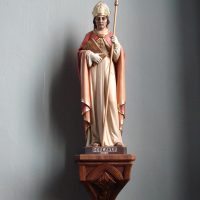
Saint Thorlak in Lincoln
The first Icelander known to have studied in Lincoln was Þorlákr (Thorlak) Þórhallsson, bishop of Skálholt, South Iceland, from 1178 until his death in 1193. He studied abroad from c. 1153 – 1159, first in Paris and then in Lincoln. The reason he went to Lincoln is unknown. He may have met a master in Paris whom he followed to England. Another good reason might be that the cathedral school of Lincoln was well known at that time for the study of canonical law. He must have enjoyed his stay in Lincoln because his nephew, Páll Jónsson, followed in his footsteps and studied there as well. All sources on Þorlákr are written in the vernacular (Old Icelandic) except for remnants of Latin texts written shortly after 1200. Three versions of Þorláks saga (The Saga of Thorlak) have been preserved. The oldest version of the Icelandic Þorláks saga was composed about the same time as the Latin texts. Þorláks saga describes the bishop as a pious man in a hagiographic fashion, but it also tells of his disputes with chieftains about church ownership and moral issues. To his dismay, one of the country's most powerful chieftains kept Þorlákr's sister as a concubine. Their son was the aforementioned Páll Jónsson who succeded Þorlákr as bishop of Skálholt. As bishop, he permitted people to invoke his uncle Þorlákr as a saint. Þorlákr's miracles were gathered and written down in a book, still preserved in a 13th-century manuscript. The original version of the miracle-book was read aloud at the Alþingi in Þingvellir, in 1199. Þorlákr seems to have been a popular saint until the reformation. Today, Icelanders mainly remember him because of his feast-day, December 23rd, the day when people are making their final preparations for Christmas. The day is still called Þorláksmessa, the Mass of St Þorlákr. The Viking Society for Northern Research has a freely downloadable pdf translation of The Saga of Bishop Thorlak (Þorláks saga byskups) if you wish to read more about him.
